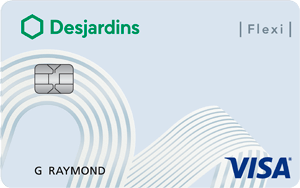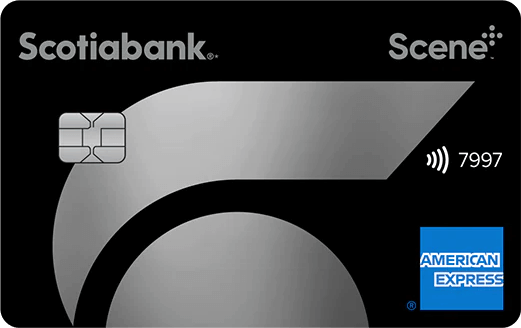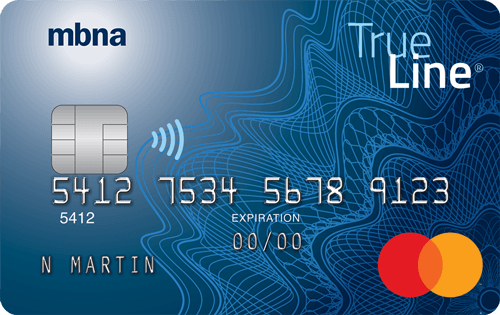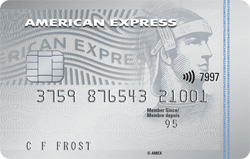Featured credit cards



MoneySense is an award-winning magazine, helping Canadians navigate money matters since 1999. Our editorial team of trained journalists works closely with leading personal finance experts in Canada. To help you find the best financial products, we compare the offerings of major institutions, including banks, credit unions and card issuers. Learn more about our advertising and trusted partners.
Compare low-APR credit cards
Compare your options with our interactive tool and get a sense of how much you could save on interest payments depending on the size of your balance.
Best low-interest credit cards in Canada
These are the best low-interest credit cards in Canada, as chosen by MoneySense editors. To make our picks, we compared the card details that matter most to Canadians who want to minimize credit card interest costs, namely the purchase and cash advance interest rates (APRs). We also considered annual fees. Our rankings are an unbiased source of information for Canadians. The addition of links from affiliate partners has no bearing on the results. Read more about how MoneySense makes money.
Gold: Desjardins Flexi Visa
At a glance: The Flexi Visa from Desjardins credit union offers a low 10.90% interest rate. Plus it has perks like limited travel insurance, up to $1,000 in new mobile device insurance, and the ability to pay for larger purchases in monthly instalments.
Desjardins Flexi Visa
Annual fee: $0
Rewards: Does not offer rewards.
Welcome offer: None at this time.
Card details
| Interest rates | 10.90% on purchases and 12.90% on cash advances |
| Income required | Not specified |
| Credit score | Not specified |
Pros
- It comes with travel insurance coverage that includes emergency medical, trip cancellation and lost or damaged baggage.
- Use this card to buy a new mobile device, and you get up to $1,000 to cover loss, theft, damage or mechanical failure.
- Access to Accord D through Desjardins, which may get you a quick approval for up to $50,000 in financing.
Cons
- While still a positive, the limited travel insurance only covers up to the first three days of your trip. If you are away for for longer, you’ll need to buy extra insurance.
Silver: RBC Visa Classic Low Rate Option
At a glance: For individuals trying to tackle credit card debt, the RBC Visa Classic Low Rate Option is a valuable card. It offers a consistent 12.99% interest rate for purchases and cash advances—that can’t be said of all low-interest credit cards in Canada. While it may lack extensive perks, it does provide advantages like discounts at Petro-Canada.
RBC Visa Classic Low Rate Option
Annual fee: $20
Low interest rate: 12.99% on purchases
Welcome offer: None at this time.
Card details
| Interest rates | 12.99% on purchases, 12.99% on cash advances, 12.99% on balance transfers |
| Income required | None specified |
| Credit score | None specified |
Pros
- With its affordable $20 annual fee and no minimum income requirement, this card is within reach for the majority of Canadians.
- Additional cards are available at no cost.
- Enjoy RBC Offers, which gives cardholders access to deals and savings.
- Earn more Petro-Points and get a discount on fuel at Petro-Canada.
Cons
- While the low interest rate is a boon to those with credit card debt, it doesn’t feature a balance transfer promotion, so you can’t move debt from a higher-interest card
Bronze: Scotiabank Platinum American Express
At a glance: The Scotiabank Platinum American Express bundles many rewards and perks into one standout card, which also comes with the lowest purchase and cash advance APRs in the country. As with other rewards cards, points can be redeemed for merchandise, gift cards or even cash, but it’s the travel rewards that really shine with the Platinum.
Scotiabank Platinum Amex
Annual fee: $399
- 2 points per $1 spent on eligible purchases
- Pay no foreign transaction fees
Welcome offer: Earn up to $2,500 in value in the first 14 months, including up to 80,000 bonus Scene+ points. Offer ends October 31, 2025.
Card details
| Interest rates | 9.99% on purchases, 9.99% on cash advances, 22.99% on balance transfers |
| Income required | $12,000 per year |
| Credit score | 760 or higher |
| Point value | 1 Scene+ point = $0.01 when redeemed for travel on any airline or hotel (including Airbnbs). |
Pros
- Includes 10 complimentary airport lounge visits per year through Priority Pass, giving you access to over 1,200 lounges worldwide.
- You only need an annual income of $12,000 to apply, which is quite low for a premium card at this annual price point.
- A very nice (and unusual) additional perk for this card is that it only charges a very low interest rate of 9.99% on purchases, balance transfers and cash advances, which is much lower than most other rewards cards. This makes it appealing for those who may carry a balance.
- One of the few credit cards in Canada that doesn’t charge a foreign transaction fee. That means you’ll save 2.5% on purchases made in foreign currencies.
Cons
- Although 2 points per dollar spent is a good flat rate for everyday spending, the $399 annual fee is steep for a card without any bonus categories.
- American Express still has more limited acceptance than Visa or Mastercard, especially internationally. So the card may not be usable everywhere.
Best Mastercard
At a glance: This low-interest card from MBNA gets you many of the same perks as the MBNA True Line Gold Mastercard, with slightly higher interest rates. The advantage of this card is that it comes with no annual fee and a lengthy no-interest balance transfer.
MBNA True Line Mastercard
Annual fee: $0
Balance transfer offer: Receive a 0% interest rate for 12 months on balance transfers completed within 90 days. (Offer not available for residents of Quebec.)
Card details
| Interest rates | 12.99% on purchases, 24.99% on cash advances, 17.99% on balance transfers |
| Income required | None specified |
| Credit score | 660 or higher |
Pros
- The promotional balance transfer rate of 0% is in effect for a full year, which gives you a good amount of time to pay down outstanding debt.
- Add up to nine authorized users to the account for free (depending on which repayment plan you select for your purchase).
Cons
- Does not include insurance or other perks and benefits.
- There’s no annual fee, but you’ll pay slightly higher interest rates than with the comparable MBNA True Line Gold Mastercard.
Best American Express card
At a glance: The no-annual-fee American Express Essential credit card offers a low 12.99% interest rate. It also comes with Amex-related perks like Front-of-the-Line experiences, dining and entertainment, and special offers.
American Express Essential Card
Annual fee: $25
Rewards: Does not offer rewards.
Welcome offer: None at this time.
Card details
| Interest rates | 12.99% on purchases and 12.99% on cash advances |
| Income required | $15,000 per year |
| Credit score | 725 or higher |
Pros
- American Express cards give cardholders access to presale tickets, exclusive events and curated dining and entertainment experiences.
- It also offers Plan It, which allows you to pay off larger purchases in installments for a fixed monthly fee, which is based which repayment plan you select for your purchase.
Cons
- The included travel insurance is limited to up to $100,000 of accidental death and dismemberment coverage.
- Doesn’t include as many extras of other credit cards, such as these best travel insurance credit cards.
Frequently asked questions
Rewards and cash back credit cards can be worth using if you have the ability to pay off your credit card in full every month. Otherwise, you’ll rack up interest charges that outpace the value of your rewards. Take the same example above: $1,000 in debt on a credit card with a 19.99% APR gets you around 0.0548% (19.99%/365), or just over $0.54, in interest charges every day.
Most credit cards offer a fixed interest rate, meaning that there is a single, unchanging percentage charged on your purchases. With a variable rate create card, on the other hand, the rate you are charged on unpaid balances can change based on a few factors.
Typically, the rate is tied to the prime rate, which fluctuates, with an additional fixed percentage on top. For example, a card might charge the bank’s prime rate plus 5%. Also, your credit score plays a role in determining how low of a rate you can get.
There’s a simple reason to consider a variable rate card: If you have an excellent credit score, you could land some of the lowest rates available in the credit card market. However, if you don’t have a great credit score, you want to keep things simple or need a card that also comes with a great balance transfer promotion, you may want to consider one with a fixed rate.
If you go with a low-interest credit card, you’ll save big on the debt you’re trying to pay off. Some cards go as low as 8.99%, like the MBNA True Line Gold Mastercard. For example, a $1,000 debt will cost you around $0.24 per day (8.99%/365) vs. $0.54 a day with the higher-rate card in the example above. The low APR will more than make up for not earning rewards. With less of your payments going to interest, you can actually pay down debt. After that, the money is yours to spend on that dreamed-of vacation or another goal.
One simple way to lower your credit card purchase interest rate charges is by switching to a low-interest rate card. If you tend to carry a balance, consider strategies like setting up automatic payments to your credit card to chip away at the amount you owe and reduce your interest charges on any unpaid balances. Consider using the avalanche or snowball method to pay off larger credit card debts.




